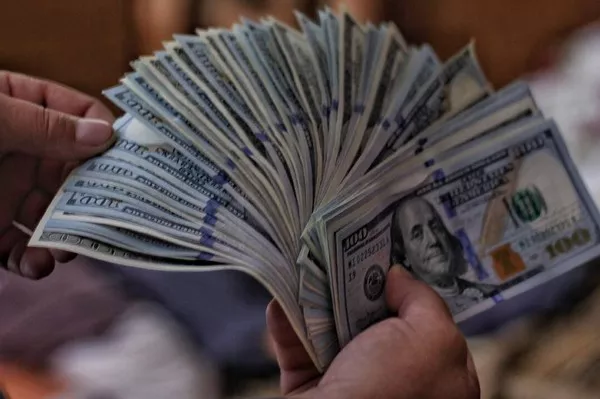The two-dollar bill, often overlooked in daily transactions, is one of the most intriguing and misunderstood denominations of U.S. currency. With its unique design and relative scarcity in circulation, it has long captured the fascination of collectors, curious citizens, and conspiracy theorists alike. In this article, we will delve into the history, significance, and enduring legacy of the two-dollar bill, shedding light on the mysteries that surround it.
A Brief Overview of the Two-Dollar Bill
The two-dollar bill is a relatively rare denomination in the United States. While the one-dollar bill and the five-dollar bill are frequently used in everyday transactions, the two-dollar bill is less commonly encountered. This relative scarcity has contributed to its mystique and has prompted many to wonder about its history and purpose.
The two-dollar bill, like other denominations of U.S. currency, has gone through several design changes over the years. Its most recent design, introduced in 1976, features Thomas Jefferson on the obverse side and a depiction of the signing of the Declaration of Independence on the reverse side. It is worth noting that the two-dollar bill is still in circulation today, although it is not as widely used as other denominations.
Historical Significance of the Two-Dollar Bill
To understand the significance of the two-dollar bill, we must first look back at its origins. The first two-dollar bill was issued in 1862, during the Civil War, as a response to the growing need for lower-denomination currency. At that time, there was a shortage of small change, making two-dollar bills a practical solution to this problem.
The use of the two-dollar bill continued to evolve throughout the years. In the late 19th and early 20th centuries, two-dollar bills were more commonly circulated, and their designs featured different historical figures and scenes. It was not until 1928 that the iconic image of Thomas Jefferson, which is still in use today, was first introduced.
One interesting historical fact is that the two-dollar bill was initially associated with silver certificates. These certificates could be exchanged for their face value in silver coins, and they were considered a reliable form of currency. This association with silver added an extra layer of value and significance to the two-dollar bill.
Common Misconceptions and Myths
The two-dollar bill has been the subject of numerous misconceptions and myths throughout its history. Some of the most common misconceptions include:
Rareness: Many people believe that the two-dollar bill is extremely rare. While it is less common than other denominations, it is still being printed and is readily available from banks.
Lucky Charm: Some believe that carrying a two-dollar bill as a lucky charm can bring good fortune. This superstition is rooted in folklore and is not grounded in any factual basis.
Holograms and Tracking Devices: There are persistent rumors that two-dollar bills contain holograms or tracking devices, which is entirely unfounded. Two-dollar bills are printed with the same security features as other denominations to prevent counterfeiting.
Out of Circulation: Some mistakenly think that the two-dollar bill is no longer in circulation. As mentioned earlier, it is still being printed and circulated by the U.S. Treasury.
Collecting Two-Dollar Bills
Due to its unique status and the misconceptions surrounding it, the two-dollar bill has become a popular item for collectors. Collecting two-dollar bills can be an enjoyable and potentially valuable hobby, as some rare and old two-dollar bills can fetch significant prices in the collector’s market.
When collecting two-dollar bills, it’s essential to look for factors that can increase their value, such as:
Star Notes: Star notes are replacements for regular bills that had printing errors. They are indicated by a star at the end of the serial number and are often more valuable to collectors.
Low Serial Numbers: Bills with low serial numbers or repeating digits (e.g., 00010001) are also more sought after by collectors.
Errors: Bills with printing errors or unusual markings can be of significant value to collectors.
Grading: Like other collectibles, the condition of the bill is crucial. Bills in pristine condition are generally more valuable.
The Two-Dollar Bill in Popular Culture
The two-dollar bill has made appearances in various forms of popular culture, adding to its mystique. In literature, film, and television, the two-dollar bill often serves as a plot device or a symbol of luck and fortune. Here are a few notable examples:
“Caddyshack” (1980): In this classic comedy film, the two-dollar bill plays a significant role as a lucky charm for the character Carl Spackler, played by Bill Murray.
“2 Dollar Bill” by 2 Chainz: The American rapper 2 Chainz released a song titled “2 Dollar Bill” in 2019, featuring Lil Wayne and E-40. The song highlights the uniqueness of the two-dollar bill and its place in hip-hop culture.
“Twos” by Bob Dylan: In this song, Bob Dylan mentions the two-dollar bill and its rarity, adding to its legendary status.
Debunking Conspiracy Theories
The two-dollar bill has been the subject of various conspiracy theories, many of which are unfounded. Some conspiracy theories claim that the two-dollar bill is linked to secret societies, the Illuminati, or hidden messages. These theories are not supported by any credible evidence and are largely the product of imagination.
The truth is that the two-dollar bill is a legitimate form of currency with a well-documented history. It is used for everyday transactions like any other bill, and it is not associated with any secretive or nefarious organizations.
Conclusion
The two-dollar bill, with its intriguing history and misunderstood status, continues to be a symbol of curiosity and fascination. It has endured as a unique and distinctive part of U.S. currency, despite the misconceptions and myths that surround it. Collectors, scholars, and everyday citizens alike find value in exploring the mysteries and stories behind this remarkable denomination. As we debunk the myths and shed light on its history, we can appreciate the two-dollar bill for what it truly is—a piece of American currency with a rich and enduring legacy.


